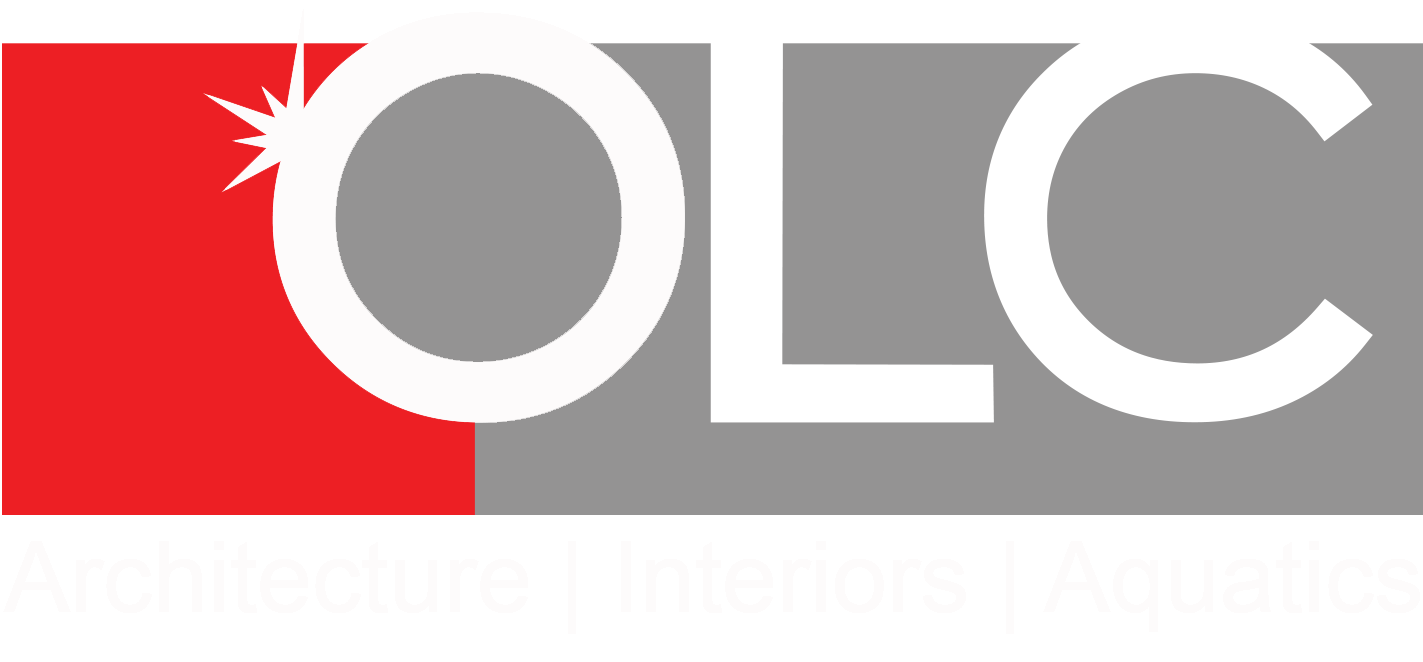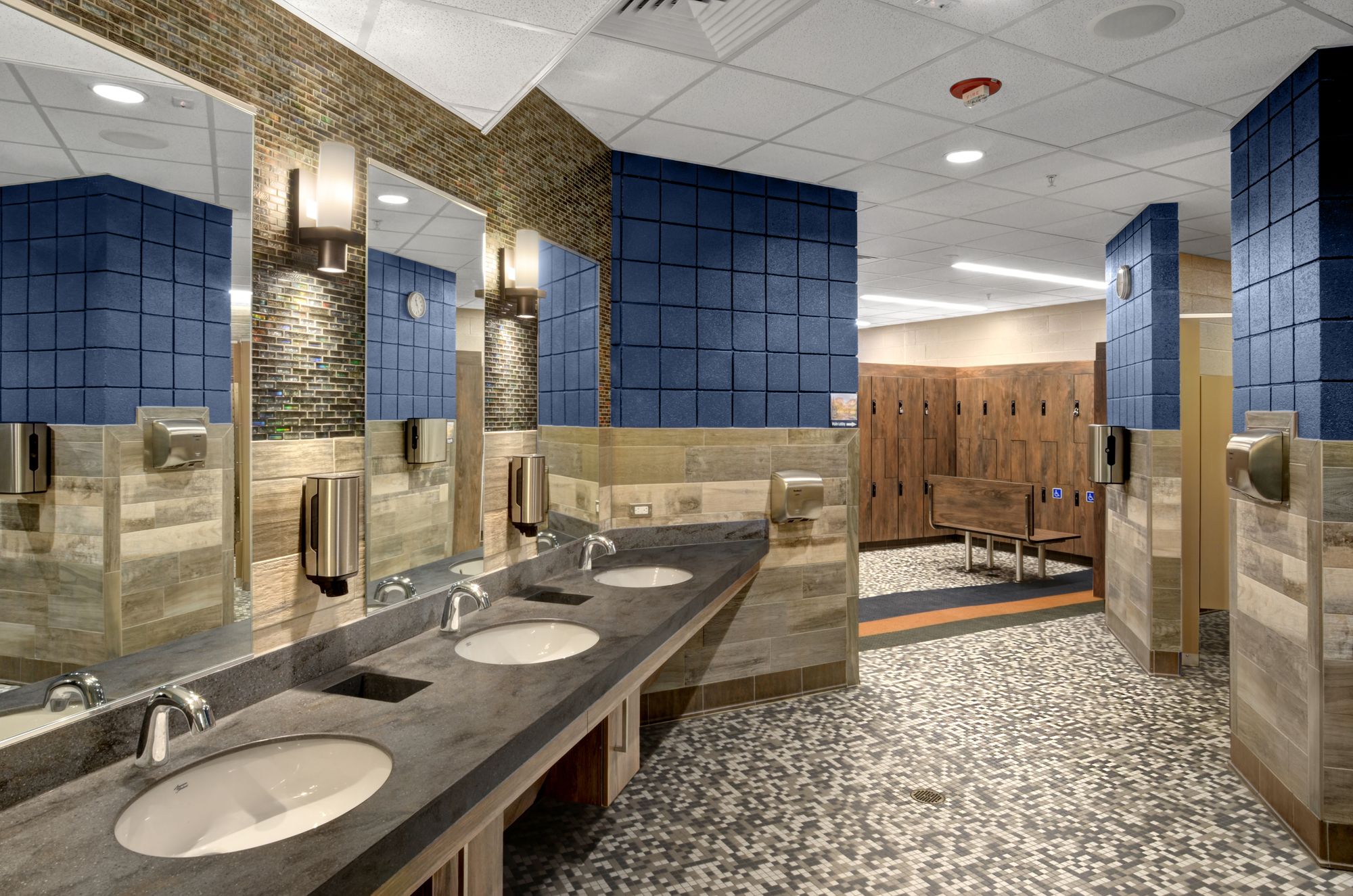
08 May Superior Locker Room Design in Balance
A Series of Life Changing Design pt. 6
Beyond the brick and mortar of a Community Center, and oftentimes hidden from the naked eye lay elements the building when designed properly; make the difference between having an experience of confusion and monotony, to one of pure joy and invigoration. This ongoing blog uncovers the fundamentals of several make or break principles of facility design that when implemented by an expert will provide your users with an incredible experience for decades to come. Today’s subject is locker room design.
In this blog, we will talk about inclusivity, amenities, targeted design, and finishes.
The buzz word regarding locker rooms for several years has been inclusivity, yet for years, I have been hearing from senior groups having concerns about sharing locker room facilities with toddlers. The buzz word just means that now architects are finally getting around to facing a growing challenge that has existed for decades. Let’s face it, this single concern has driven many aging adults to private fitness clubs in an effort, in part, to avoid the unpleasant user mix in a very private setting. Not-for-profit facilities such as Y’s have adopted a concept in locker rooms that separates the adults from the youth by gender with a separate boys and girl’s locker room. This is not a new phenomenon. This configuration begins to push against the budget with just this modest modification. Where do you spend your precious capital funds?
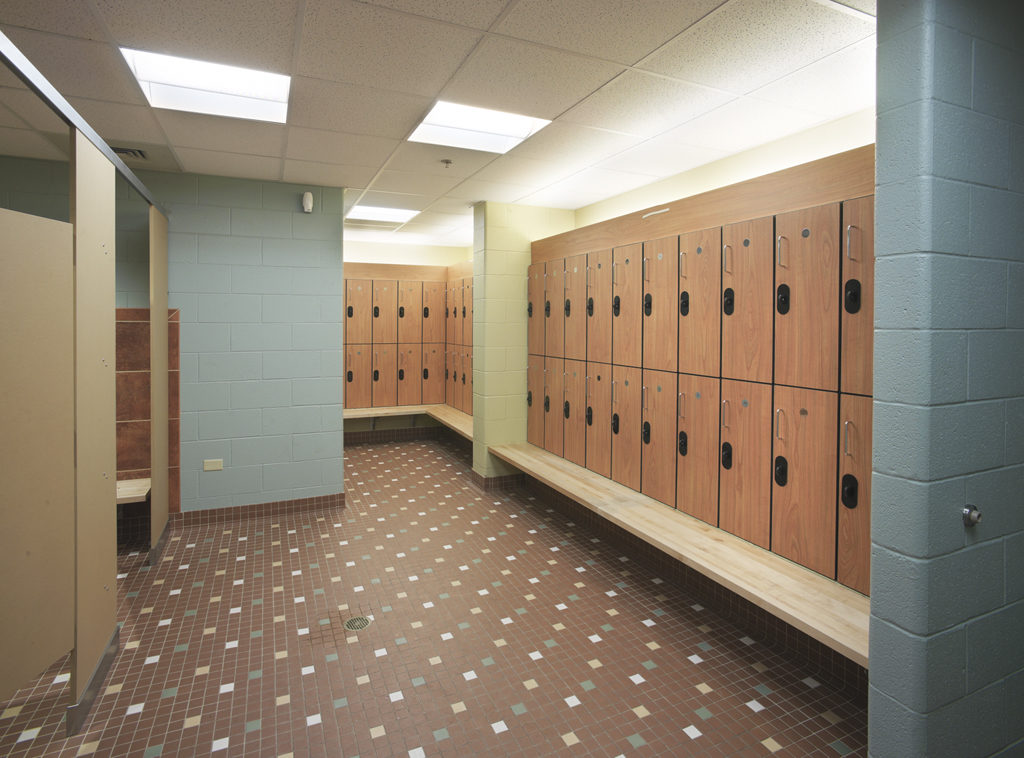
The Family Changing Room at the Castle Rock Recreation Center in Castle Rock, Colorado blends color, natural materials and pattern to create a safe and welcoming environment.
Add in the gender factor, and the equation becomes even more complex. With a growing need for gender-neutral spaces in public facilities, the notion of a cabana-type design solution may seem tempting. In fact, such a configuration can be used harmoniously for groups in need of assistance in the locker rooms such as individuals with disabilities, seniors, or children. Add in those who desire modesty due to a variety of circumstances — religious mores, sexual orientation, physical abilities, and everything in between — and your head begins to spin. Given the myriad of potential separation requirements that could exist, an architect might be inclined to make all the lockers cabana-style private rooms with individual toilets, changing area, shower, and lavatories. One can see how the dollar signs begin to quickly pile up. Careful consideration of need and a sober and realistic design approach is required for a successful outcome. For example, and on a parallel track, there is a growing trend in facilities where users are arriving dressed for their activities. They leave the facility afterward to shower at home. So, potentially, not all cabanas require all the amenities previously listed. Perhaps only one out of 4 has a shower. Or one out of 4 has a water closet. Or perhaps 80% are simply changing cubicles.
Understanding your customers, and how they will use such a gender and age neutral changing configuration is critical in striking the right balance. A certain portion of the population will still be perfectly content with the traditional locker room. Additionally, one of the keys to designing a traditional locker room in facilities with a pool involves the provision of ‘sub-areas’ within the locker room footprint where diverse age groups naturally gravitate. A pod of aquatic specific lockers does a lot to separate the youth from the adults in such a setup, while not creating two separate and distinct rooms.
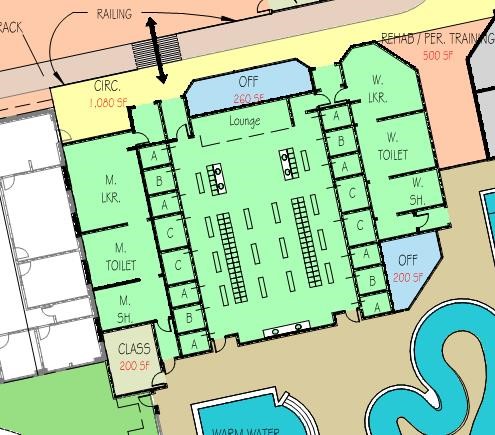
Cabana Style Locker Room with 3 different room configurations and amenity levels used in conjunction with traditional locker rooms for the best of all worlds.
In the world of private fitness clubs, the more amenities a locker room has, the more likely a member is to feel that the locker room is part of their own personal identity. The more likely she will be retained as a member. The same is true of customers in public and other institutional facilities. Some of the amenities members appreciate include:
- Private changing areas within the locker room itself.
- The option of a permanent locker rental they can call their own.
- A small lounge with a quiet sitting area for relaxation.
- A swim suite dryer, and a grooming station with hand-held hair dryers (as opposed to a hand dryer mounted high on a wall for hair drying purposes).
- Everyone likes to have a fresh towel.
- Above all, virtually all appreciate a private shower with a place to hang your towel, put your bar of soap and glasses, pull the curtain or shut the door, and clean up in your own little world.
These little universes can be constructed of solid tiled walls, or simply carved out of the ‘wet area’ from solid plastic or phenolic panels that are similar in nature to toilet partitions. Keep in mind that towels are a luxury. They require purchase, collection, transport, cleaning and re-distribution. They also disappear from the premises, so there is a considerable operational aspect that must be carefully considered prior to making such a commitment.
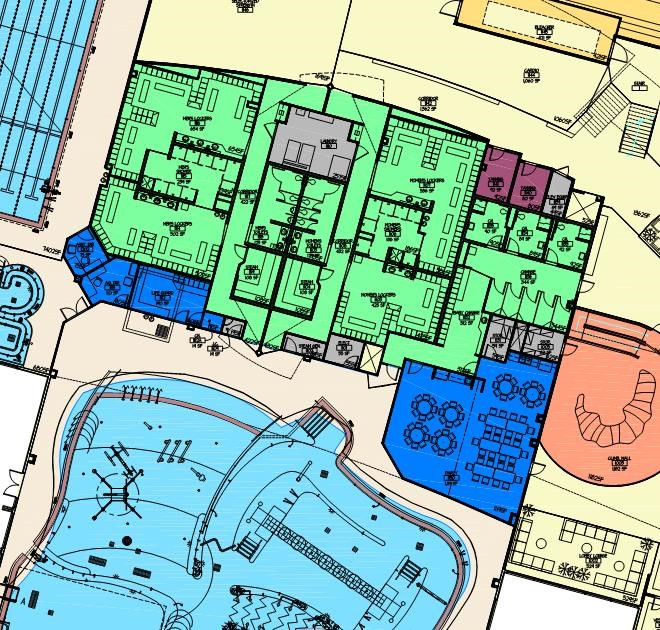
Party Rooms (dark blue) that feed directly into the family changing area (green to the right) so the tots don’t drag pool water everywhere.
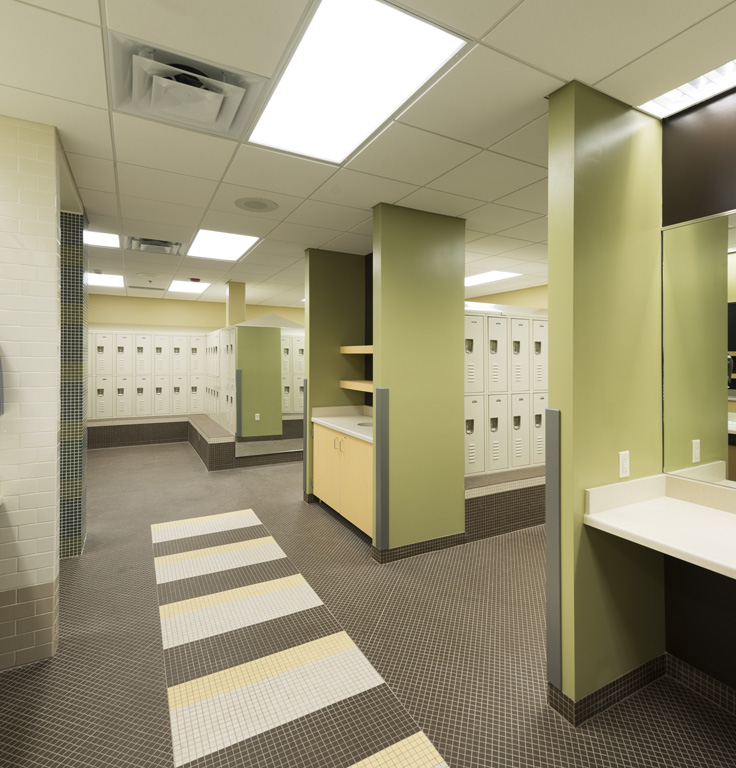
Towel drops, grooming stations and even metal lockers add amenities and comfort at Minot State University in Minot, North Dakota.
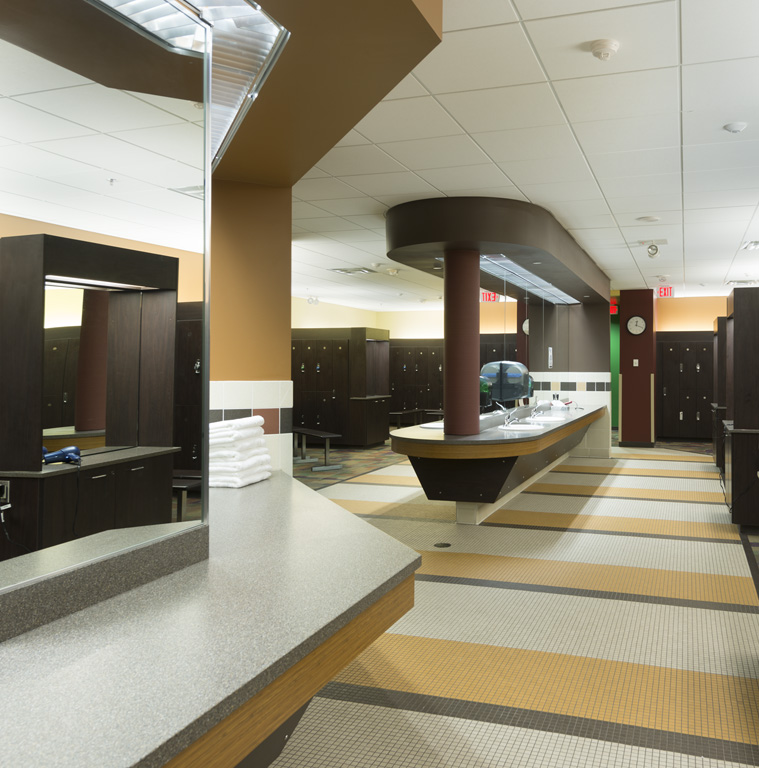
Private grooming stations at Choice Health and Wellness Center in Grand Forks, North Dakota.
It goes without saying that, locker rooms are oftentimes targeted toward a singular use. This targeted use requires a targeted design response. This is most often the case where sports specific locker design is being considered for a facility. Trends in sports-specific design are evolving, but the steadfast needs for this type of locker room make for a slower evolving trend. Training lockers for athletics are very different than league hockey lockers for example. For an athletic locker there is always a training area close by. For hockey lockers, oftentimes, a shared shower with a staggered scheduled adjacent locker room makes for less plumbing. In fieldhouse design, it’s typical to have a simple group changing room for each team. Some facilities opt not to have changing/locker rooms at all. Some operators have regretted that decision. In some cases, competitive swim team lockers are shared with recreational users. In these cases, a way must be found if simultaneous use is anticipated, to separate these users within the over-all locker room configuration during events.
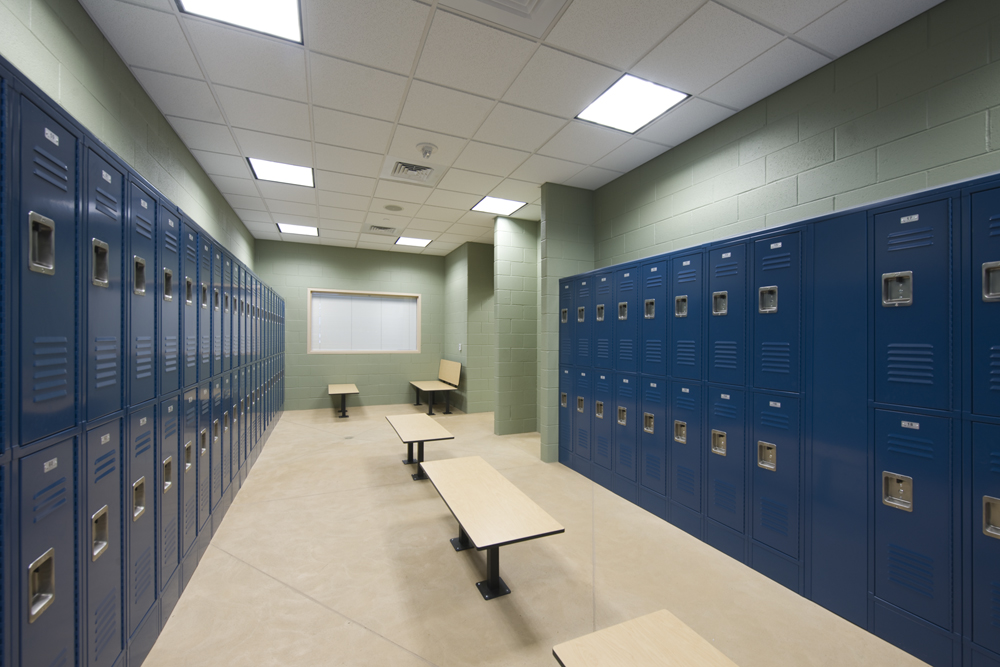
Simple but effective team lockers used for indoor track and field events at the Campbell County Recreation Center in Gillette, Wyoming.
The way a locker room ‘feels’ can be directly attributed to the level of finishes the design team applies to the surfaces and elements. A tile shower simply feels more luxurious than a plastic panel unit. With the creation of many durable materials that mimic nature, such as porcelain tile that mimics slate or wood, or plastic laminates that convincingly replicate wood or metal, new life can be injected into the surfaces of locker rooms to evoke a better sense of comfort and calm. Gone are the days where floors must be epoxy resin or sealed concrete. Wall surfaces don’t need to be pattern-less or white to feel clean, and even metal lockers are being constructed to compliment a higher standard of design. Utilizing this approach, along with upgraded illumination lends a sense of comfort so important for a superlative end-user experience without breaking the bank.
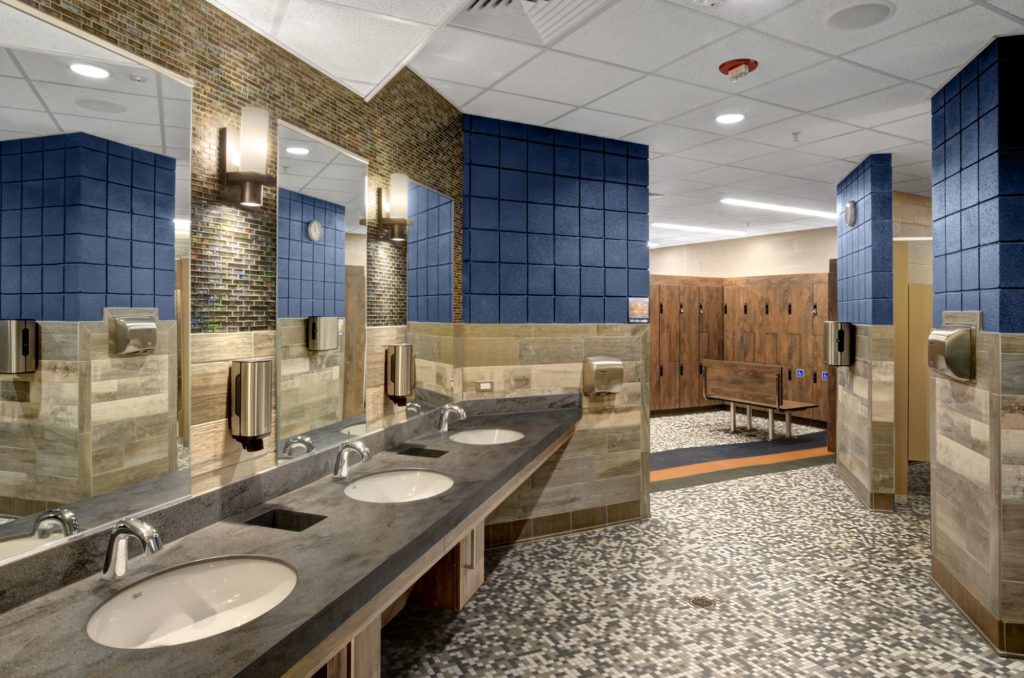
Upgraded illumination, patterned tile floor, wood tone tile wall, and wood locker all create a relaxing mountain environment at the Estes Valley Community Center in Estes Park, Colorado.
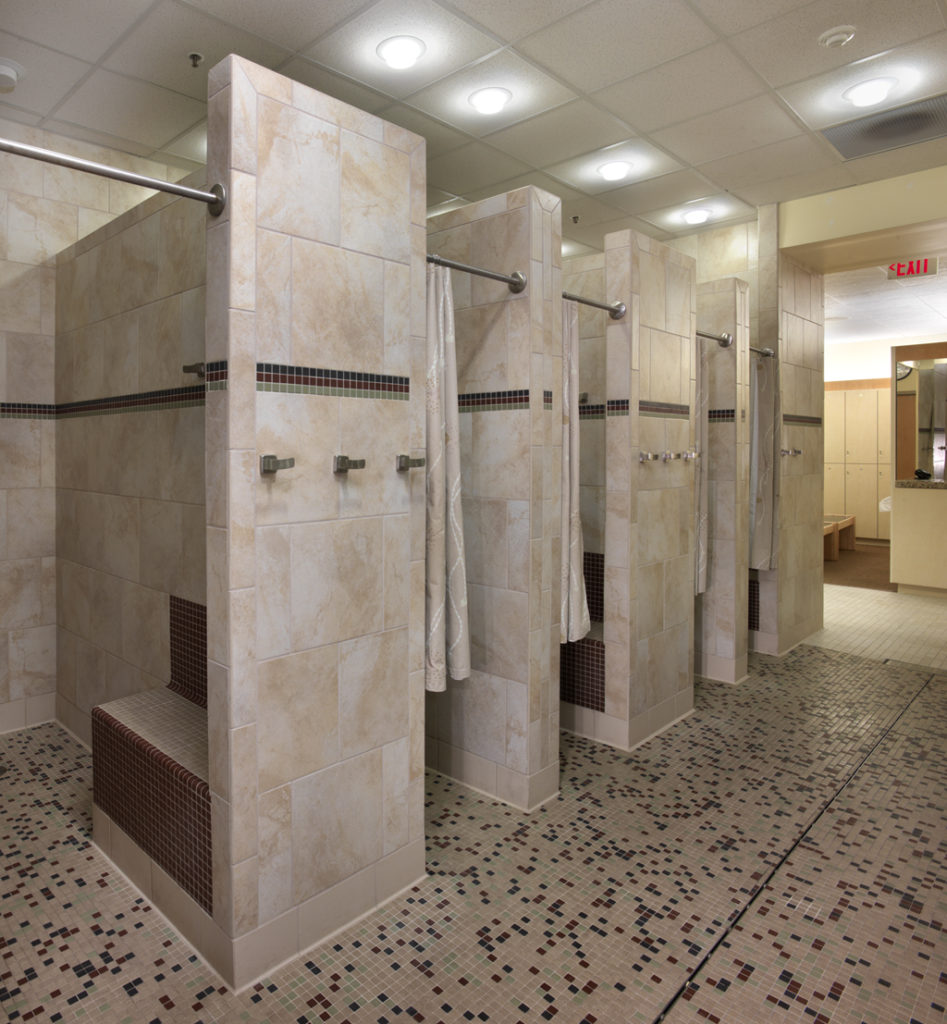
Private shower stall at Pro Health in Melbourne, Florida are constructed from CMU with natural stone porcelain tile, changing bench, draw curtain and robe hooks.
